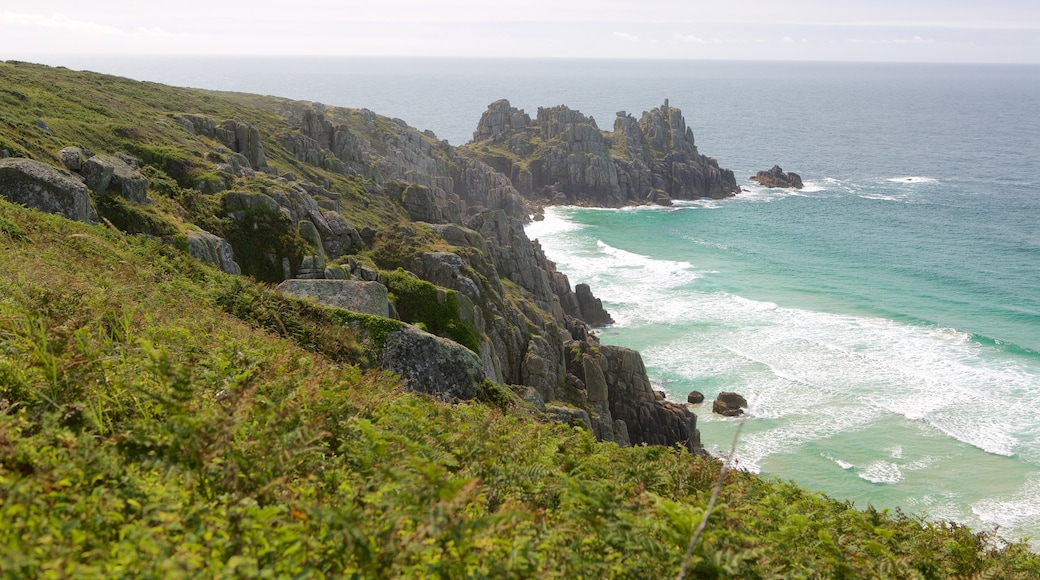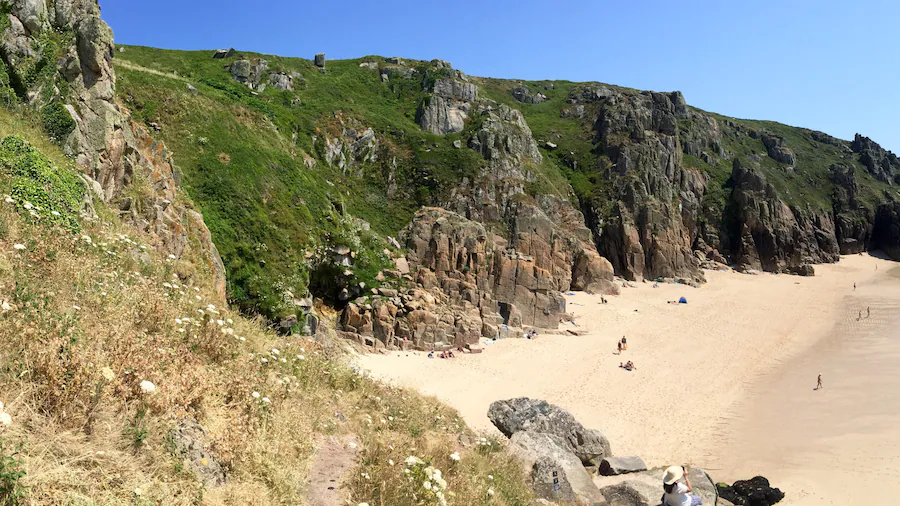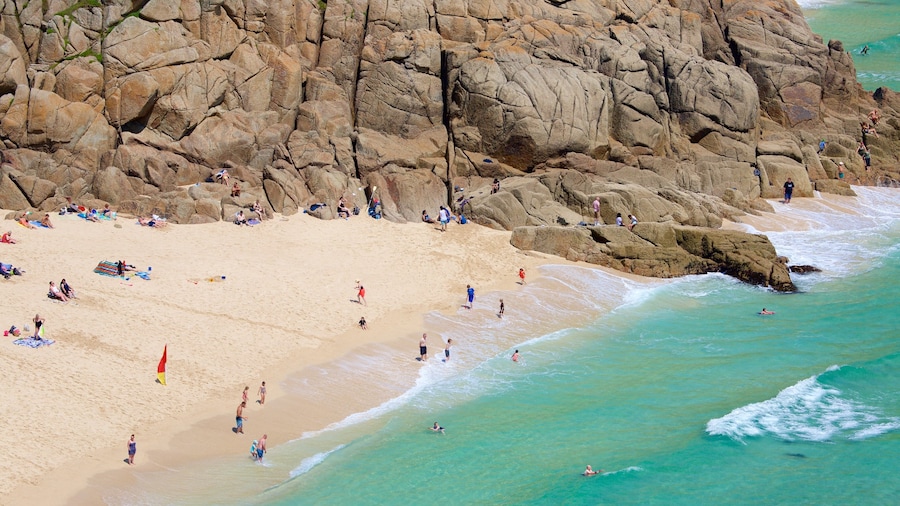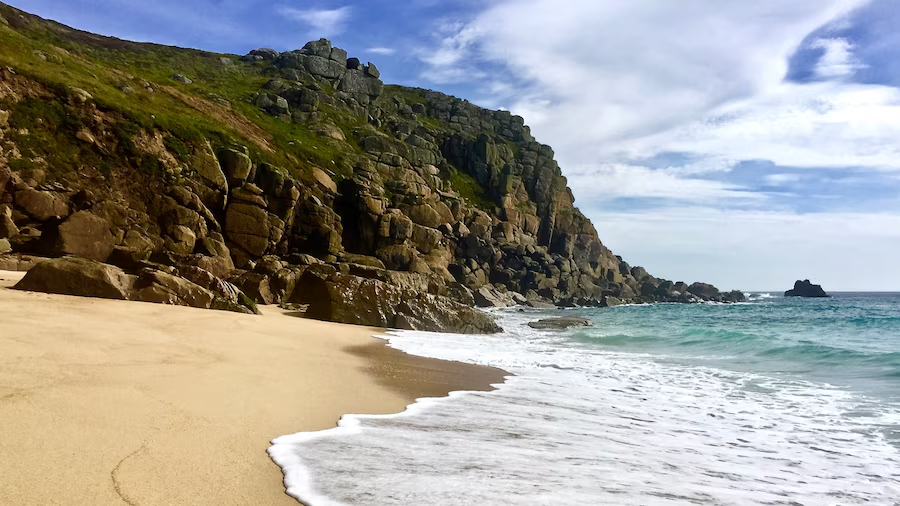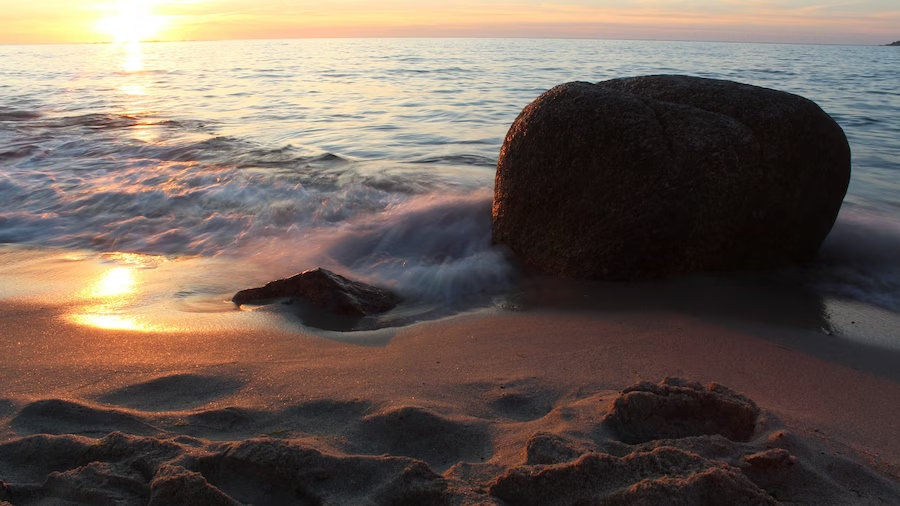로건 록은 곶 절벽 꼭대기에 자리 잡고 있는 커다란 바위입니다. 암석 꼭대기에 위태롭게 균형을 잡고 있는 이 바위는 가볍게 건드리면 절대 완전히 움직이지는 않으면서 흔들리곤 했습니다. 바위가 예전처럼 흔들리지 않은 이유를 알아보고 이 콘월의 야생 지역에서 특별한 광경을 둘러보세요.
콘월에서는 바위를 영어로 균형을 잡고 있는 돌이라는 뜻의 'Men Omborth'라고 부릅니다. 저명한 작가인 버지니아 울프가 어린 시절에 돌을 흔들어 본 일에 대해 쓴 글을 읽어보세요.
Teryn Dinas 절벽 꼭대기에 있는 매혹적인 바위를 올려다보세요. 인접한 바위를 조심스럽게 기어올라 전설적인 바위에 가까이 다가가면 대서양과 거친 주변 해안선의 아름다운 경치를 즐길 수 있습니다.
시인 윌리엄 메이슨의 카락터커스에 언급되어 있는 이 화강암 바위의 역사에 대해 알아보세요. 바위는 오랫동안 마법 같은 이야기와 관련지어 졌으며 한때 철기 시대의 절벽 꼭대기 요새가 있던 자리에 위치해 있습니다.
이 바위와 관련된 가장 유명한 이야기는, 1824년에 자신들의 군사력을 과시하기 위해 돌을 옮겼던 휴 골드스미스 중위와 그의 해군 대원에 관한 이야기입니다. 몇 달 후, 바위를 옮긴 자리가 불안정하여 부대는 힘을 합쳐 바위를 제자리로 되돌려 놓았습니다. 바위를 다시 끌어 올리기 위해 사용된 앵커 구멍을 가까이에서 관찰해 보세요. 바위는 더 이상 예전처럼 크게 흔들리지 않지만 여전히 움직이기는 합니다.
로건 록 퍼블릭 하우스로 향해 골드스미스 중위가 보상하기 위해 지불해야 했던 대금의 영수증 원본을 구경하세요. 이 지역에는 Horrace의 작은 바위 섬, Seghy, Great Goular 등 몇 가지 다른 흥미로운 암석층이 있습니다.
로건 록은 콘월 남서부의 트리엔 마을 근처 해안에 있습니다. 포스커노 비치와 페든 바운더 비치 옆에 있는 이 자연물에 찾아가려면 랜즈 엔드에서 남동쪽으로 6km 차를 몰고 가서 로건 록 인에 주차를 한 다음 로건 록의 표지판을 따라가세요.

